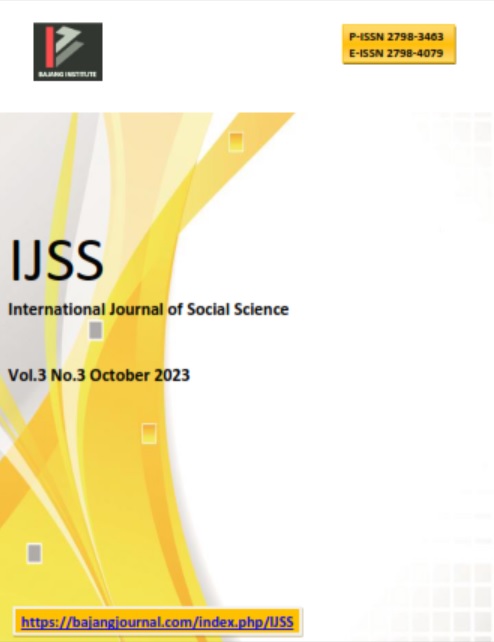THE IMPORTANCE OF HYDRATION AWARENESS FOR VOLLEYBALL PLAYERS
DOI:
https://doi.org/10.53625/ijss.v3i3.8568Keywords:
Protein Energy Adequacy Levels, Physical Fitness, Badminton PlayersAbstract
When playing volleyball, there is an optimal mechanism in terms of dissipating heat energy from the body, which will evaporate sweat from the surface of the skin. This mechanism is also versatile in regulating temperature ranges in the body, where this process occurs during the sweating phase which can have an effect on dehydration. Dehydration itself is part of the loss of fluid volume in the body so that it can experience changes in body mass that occur during exercise. For example, water dehydration of 2% is defined as a body mass deficit of 2%. Thermoregulation in sweat is the main source of loss of body mass during acute exercise/exercise, but there are other factors that contribute, namely the loss of water and carbon dioxide through the respiratory tract which is produced by the substrate oxidation pathway. To restore stamina optimally as a result of rehydration, there must be a strategy to restore this condition. It is known that rehydration is an important factor in recovery, especially after exercise, if a player experiences a body mass deficit, they must replace it with fluids and electrolytes in preparation for the next training or match
References
Graham P Bates and Veronica S Miller. 2018. Sweat rate and sodium loss during work in the heat. Occup Environ Med. 57:165–174. doi: 10.1136/oem.57.3.165
Hancock PA, Vasmatzidis I. Effects of heat stress on cognitive performance: the current state of knowledge. Int J Hyperthermia. 2003;19:355–372. doi: 10.1080/0265673021000054630.
Cheuvront SN, Carter R, Castellani JW, Sawka MN. Hypohydration impairs endurance exercise performance in temperate but not cold air. J Appl Physiol. 2015;99:1972–1976. doi: 10.1152/japplphysiol.00329.2005
American College of Sport Medicine. Joint position statement: exercise and fluid replacement for athletes. Med Sci Sports Exerc. 2016;28:I-VII
Powell J, Barber-Foss K. Sex related injury patterns among selected high school sports. Am J Sport Med 2000;28:385-91
Cox GR, Broad EM, Riley MD, Burke LM. Body mass changes and voluntary fluid intakes of elite level water polo players and swimmers. J Sci Med Sport 2002;5(3):183—93.
Schoffstall JE, Branch JD, Leutholtz BC, Swain DE. Effects of dehydration and hydration on the one-repetition maximum bench press of weight-trained males. J Strength Condition Res 2001;15(1):102—8.
Walsh C, Davis K. Fluid loss and replacement in English division one professional rugby league football players. J Sport Sci 1996;14(4):367.
Noakes T. Fluid replacement during marathon running. Clin J Sport Med 2003;13(5):309—18. 24. Brown D, Winter E. Fluid loss during international match play in squash. J Sport Sci 1998;16(6):586—7.
Alistigna. 2015. Pengertian entalpi hidrasi. (online). (http://budisma.net/2015/03/pengertian-entalpi-hidrasi.html, diakses 10 oktober 2016).
Ashadi, kunjung. 2015. Pentingnya hidrasi bagi atlet. Surabaya: unipress.
O'Neal Eric K, Wingo Jonathan E, Richardson Mark T, Leeper James D, Neggers Yasmine H, Bishop Phil A. 2011. “Half-Marathon and Full-Marathon Runners' Hydration Practices and Perceptions”. Athletic training. Vol. 46: Hal 581-591.
Purwanti, T. 2016. 12 Dampak Buruk Dehidrasi bagi Tubuh. (online), (http://www.pesona.co.id/read/12-dampak-buruk-dehidrasi-bagi-tubuh-,
Ramadhan, R. I. dkk. 2016. Hubungan antara status hidrasi serta konsumsi cairan pada atlet bola basket. (online). http://journal.uny.ac.id/index.php/medifora/article/view/10068/7893
Downloads
Published
How to Cite
Issue
Section
License
Copyright (c) 2023 Ahmad Hariyanto

This work is licensed under a Creative Commons Attribution 4.0 International License.

















